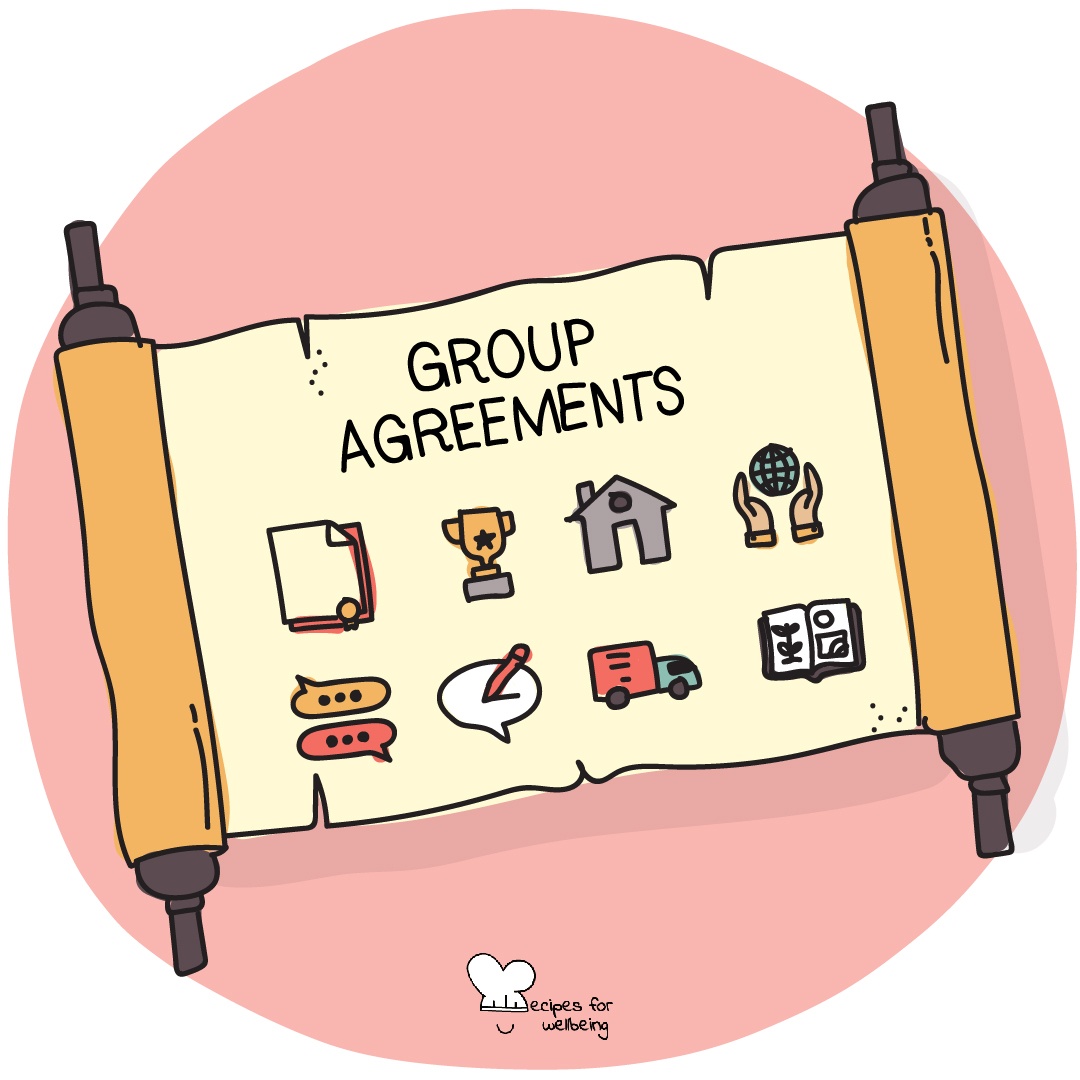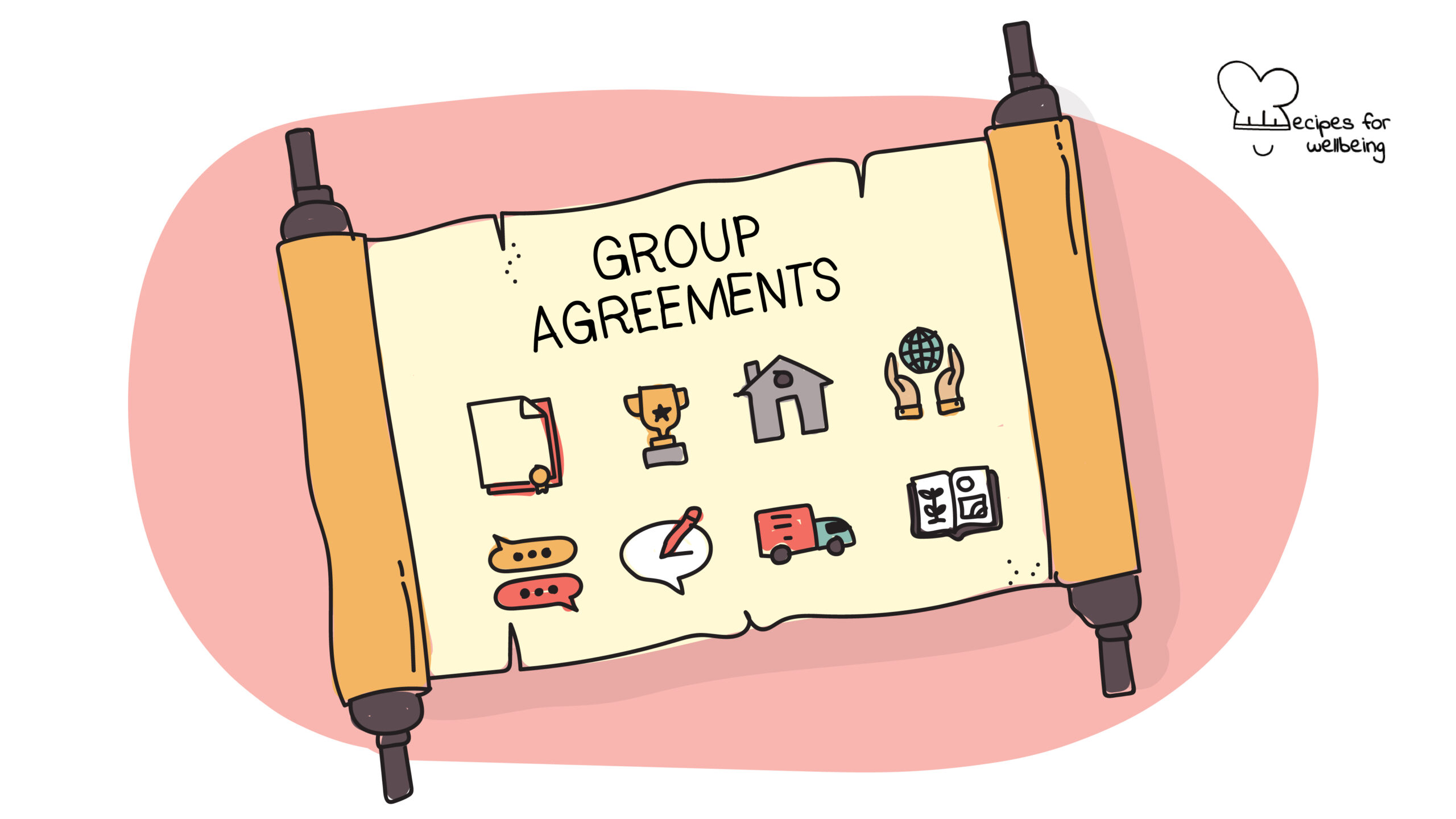
Establishing group agreements
How do we want to show up for each other?
👥 Serves: 11-25 people, 2-10 people, 26-40 people, 41+ people
🎚 Difficulty: Easy
⏳ Total time: 31-60 minutes
🥣 Ingredients: 1 flipchart sheet, 1 pack of sticky notes or slips of paper, a few markers/pens
🤓 Wholebeing Domains: Community, Liberatory Learning, Radical Care
💪 Wholebeing Skills: Accountability, Co-creation, Hosting conversations, Listening, Multiperspectivity, Relating to Others, Respect, Trust

Establishing group agreements
📝 Description
A process to define agreements to work in groups.
When gathering a group of people who don’t work together regularly, or who are gathering for a specific project or process, it is advisable to spend some time at the start to define some principles for how you want to be together. Some facilitators call this process “social contracting”, others refer to it as “container building”, and yet others speak of “co-designing an alliance”. Whatever words you use, the purpose is the same: to establish temporary agreements that help individuals navigate the collective space they have entered.
👣 Steps
Step 1 – Framing (5’)
Whenever appropriate in the first session of your gathering, explain that in order to make the gathering a success, it is helpful to co-design your alliance and agree on a set of temporary guiding principles and values that everyone will strive to honour during your time together.
Step 2 – Individual reflection (5’)
First, invite people to spend a few minutes to reflect in silence on the following: What do I need us to agree on, so I can fully bring myself to the space? And how do we want to show up for each other? Hand out sticky notes and markers or slips of paper and pens if they wish to jot down any keywords.
Step 3 – Small-group brainstorming (20’)
Divide people into small groups (3–5 people each) and give them 20 minutes to share their individual reflections and discuss what resonates with the others in the group. By the end of the 20 minutes, each group should come up with 2–3 agreements they wish to share with the larger group. It is helpful if the agreements are not single words but action-oriented statements.
Step 4 – Large group alignment (30’)
Regroup as one large group and invite each group to share their 2–3 agreements (no more!) and check whether other groups have clarification questions or suggestions for slight tweaks in the wording. Then, check that the entire group is willing to commit to the agreement before capturing it on a dedicated flipchart. Continue until all groups have shared and your flipchart has captured all the agreements.
Step 5 – Sample agreements
Below are just a few examples of group agreements, summarised by adrienne maree brown in Emergent Strategy:
- “Assume best intent, attend to impact.”
- “Be open to learning.”
- “Be open to someone else speaking your truth.”
- “Building, not selling–when you speak, converse, don’t pitch.”
- “Confidentiality–take the lessons, leave the details.”
- “Engage tension, don’t indulge drama.”
- “Listen from the inside out, or listen from the bottom up (a feeling in your gut matters!).”
- “Make space, take space.” (this is a post-ableist adaptation of step up, step back.)
- “Self care and community care–pay attention to your bladder, pay attention to your neighbours.”
- “Value the process as much as, if not more than, you value the outcomes.”
- “W.A.I.T.–Why Am I Talking?”
- “Yes/and, both/and.”
Step 6 – Top tips
Here are a few tips to facilitate this process.
- If the large group alignment gets stuck (e.g. people go on discussing a specific wording in an agreement), use the following question to move the group forward: Is this good enough for now, safe enough to try?
- Remind people that your group agreements are a living thing that can be revisited and adapted according to the emerging needs of the group.
- Remind people that it may not always be possible for everyone to honour all the agreements at all times so invite them to be graceful with themselves and others.
- Refer to the group agreements during your gathering whenever you sense re-alignment might be necessary, as well as at the end of your gathering during the harvesting process.

